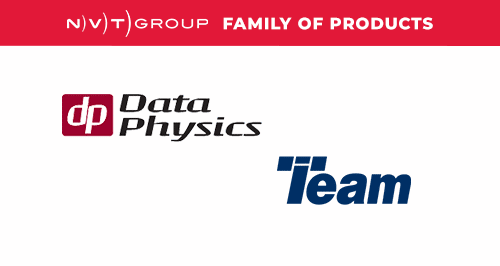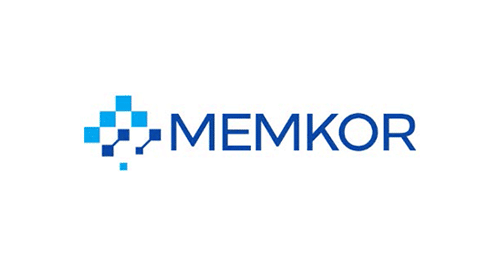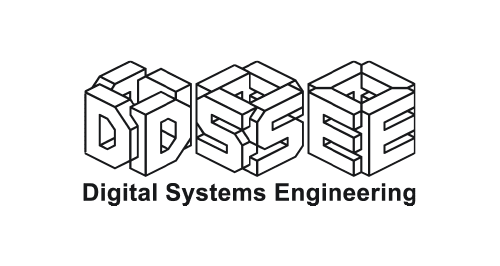
5G Technology and High-Performance Computing: Enhancing AI at the Edge
Across a wide range of industries, 5G technology is being adopted to enable local data management and rapid data transfer.
Learn more about what 5G is and how it utilizes high-performance edge computing to enhance AI applications closer to the source of data.

What Is 5G?
5G is the fifth-generation technology standard for broadband cellular networks. It is the successor to 4G technology, which is widely used today.
Most importantly, 5G utilizes software-defined networks (SDNs), which virtualize controllers to enable the management and routing of data packets via a centralized server, eliminating the need for expensive hardware.
Because of this, 5G is able to deliver high data transfer rates, reliability, low latency, massive network capacity, and increased availability to enhance connectivity, creating a more uniform experience for all users. And with less hardware to be compromised, data is routed through virtual hubs that can be moved or changed quickly if required.
Differences From 4G Technology
There are some key differences between 5G and 4G technology:
- 5G is much faster than 4G (up to 10 Gpbs, peak data rate, and 100+ Mbps, average data rate) vs. 1 Gbps on 4G.
- 1 ms latency vs. 10 ms on 4G.
- 5G has a much higher capacity, about 100x over 4G along with a much better network efficiency.
- 5G can support all spectrum types (licensed, shared, unlicensed) and bands (low is below 1 GHz, mid is 1 GHz to 6 GHz), high or millimeter wave (mmWave), a wide range of deployment models (macro-cells to hotspots), and new ways to interconnect (device-to-device and multi-hop mesh).
- 5G is 90% more efficient which offers a drastic battery life improvement, which is very important for mobile devices.
How Does 5G Work?
5G is based on OFDM (Orthogonal Frequency-Division Multiplexing) and operates on the same mobile network principles as 4G LTE.
OFDM is a method of taking a single stream of data and dividing it into several separate sub-streams for transmission via multiple channels.
5G NR (New Radio) air interface will further enhance OFDM to deliver much higher flexibility and scalability.
The New Radio component allows 5G to be much more efficient than 4G LTE and offers much higher speeds and reliability with lower latency.
The Future Of 5G
By 2025, 5G is expected to have more than 1.7 billion subscribers, indicating that the technology is growing in popularity among the public and private sectors.
To fully enable the power of 5G, however, there is a need for an infrastructure of nodes (servers/computers) to run AI (artificial intelligence) applications at the edge, meaning closer to the data source, and allow local management of data.
This is where high-performance computers come into the mix. Let’s take a closer look.
5G Technology and High-Performance Edge Computers
Purpose
Simply put, edge computing means that data is processed near the source.
With regular computing, data is usually sent from a device to a centralized data center for processing and is then sent back to the device.
Edge computing speeds up the process by bringing server and data-center capabilities such as computing power, storage capacity, and network bandwidth into computing devices. Additionally, processing data closer to the source makes threat detection much easier.
This is especially useful in military environments, as warfighters often need immediate, actionable insights to increase situational awareness and effectively track enemy threats, so they can deliver decisive action in minimal time.
For military and commercial purposes, bringing these capabilities to the edge means customizing ruggedized, SWaP-C optimized computing solutions to comply with a myriad of technical, performance, and environmental specifications in order to ensure reliable performance in the harshest of environments.
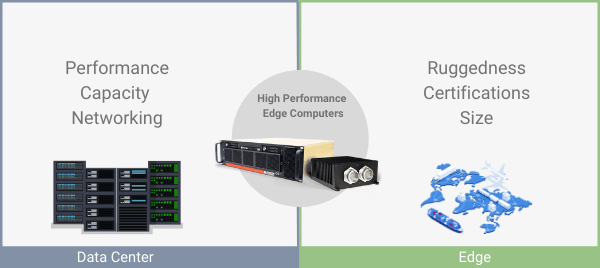
Operating as edge nodes, high-performance computers possess enhanced computing, data logging, and networking capabilities to run multiple virtualized applications and RAN (radio access network) infrastructures on the same piece of hardware.
RAN is a network infrastructure consisting of radio base stations with large antennas that receive, process, convert, and transmit radio signals to be forwarded to the core network.
vRAN, or virtualized RAN, is a critical component of 5G technology, as it virtualizes hardware functions to increase automation, flexibility, and adaptability in response to changing network conditions.
This is especially useful as devices become more interconnected in an Internet of Things (IoT) and the amount of data generated on a daily basis by these devices and others has increased exponentially.
How Does Trenton Fit In?
5G technology brings some challenges when it comes to integrating with existing infrastructures and managing massive amounts of data, further highlighting the need for reduced latency in mission-critical applications.
Our hardware provides computing power, storage capacity, and network bandwidth to manage the huge amounts of data 5G is going to generate from an increasing number of sensors and devices.
For the industrial and military sectors, this means bringing our capabilities to the tactical edge where we enable 5G connectivity and processing of its massive data inputs and outputs in austere environments.
Our servers–or in this case, edge nodes–enable private networks and apply virtualization to run multiple RAN infrastructures on the same piece of hardware, bringing the gap between IT and OT. (IT, information technology, applies to data, whereas OT, operational technology, applies to devices.)
We provide the ideal solutions to manage 5G network traffic among distributed servers that can gather and process large amounts of data. Here’s two of our newest solutions to help enhance AI at the edge anywhere, anytime:
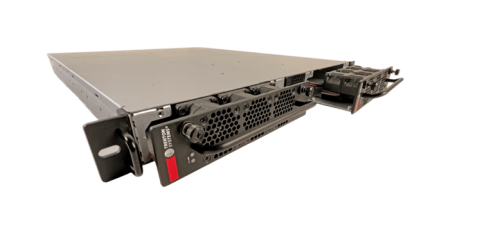
1U BAM FM
A ruggedized, secure, USA-made modular blade server with extensive configurability to enhance AI/ML/DL workloads at the edge in real-time.
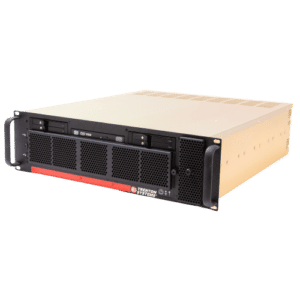
3U BAM
A ruggedized, SWaP-C optimized rack mount server for high-performance edge computing and AI inferencing across the modern battlespace.
Besides reducing latency and offloading traffic from the core network, our systems help to improve connectivity through supporting 5G technology, eliminate expensive hardware through virtualization capabilities, and enable remote management through IPMI, reducing total cost of ownership.
Extremely lightweight and modular, we also enable quick mounting and rapid deployment in the field, reducing downtime and ensuring optimal performance.
Applications and Use Cases
On the whole, 5G connectivity will transform the way that the military operates by connecting sensors and weapons to help warfighters better understand, shape, and adapt to complex and congested physical and information environments.
The ultimate goal of 5G for the military is to deliver real-time intelligence, creating an infosphere where data from sensors, targeting, surveillance, and signals is readily available.
Let’s take a look at some potential applications and use cases.
Electronic Warfare (EW)
A core component of EW is to use signals to attack the enemy and make sure they cannot disrupt or use these signals themselves.
Pairing a 5G network that operates in very high frequency (millimeters) with supported waveforms that have very little probability of detection provides a competitive advantage.
Additionally, 5G networks avoid disruption from accidental or purposeful signals that get in the way, and even if there was any sort of disruption, other 5G-powered technologies could aid in identifying it.

Unmanned Aerial Vehicles (UAVs)
UAVs need to stay in constant contact in order to change their performance accordingly and navigate through congested air space.
Through enhanced connectivity and lower latency, 5G enables UAVs to communicate instantly by sending real-time data to other vehicles, controllers, and users, even in areas with limited connectivity.
Therefore, UAVs can fly BVLOS (beyond visible line of sight), as they are able to provide real-time insights into their environment, quickly receive and act upon commands sent from a pilot or ground control system, and, if need be, amend their course of action.
For example, drones can provide a view of current battlefield conditions and feed control rooms the necessary data to prompt an immediate response, reducing the margin of error.
Drones can also give insight into current levels of air traffic and weather conditions, leading to fewer collisions and preserving functionality.
C4ISR (Command, Control, Communications, Computers, Intelligence, Surveillance, Reconnaissance)
C4ISR systems require increasingly high bandwidth to process, analyze, and distribute intelligence from a network of ground and aerial sensors.
Coupled with AI, 5G can provide commanders with timely access to key intelligence and actionable insights that enhance situational awareness and reduce decision-making times.
For example, let’s say an ICBM (intercontinental ballistic missile) is headed for the United States. 5G will be able to provide command room personnel with the insights necessary to effectively track and destroy the missile within a matter of seconds.
Final Thoughts
At its core, 5G technology aims to create ubiquitous communications with a global network to drive AI processing and operational decisions to the edge, increasing situational awareness, reducing decision times, and ensuring optimal performance.
5G communications systems bring more reliable, higher throughout, secure, and ultra-low-latency connectivity required for edge devices and platforms to fully harness the power of AI and deliver prompt, decisive action across all domains of the modern battlespace.
By integrating 5G with existing military communications, warfighters can achieve more effective operations in the harshest of environments and have access to data to perform their missions anywhere in the world.
About Trenton Systems
Trenton Systems has been a leader in the embedded, industrial computer industry since 1989. Few computer companies can say that they have remained relevant in this ever-changing technology industry for so many years. Trenton has a rich history and have been used in many critical applications, but the goal has always remained the same – exceed the customer’s expectations by adding value with on time delivery and continuous improvements in quality of products and services.
Products include rack servers, blade servers, edge computing, rack mount servers, industrial computers, military computer rugged computers, rugged servers, embedded pcs, industrial servers, military servers, ruggedized servers mil spec computers, ruggedized pcs, military grade servers, rack mountable pcs, and computers made in the USA. Visit Trenton’s website.


